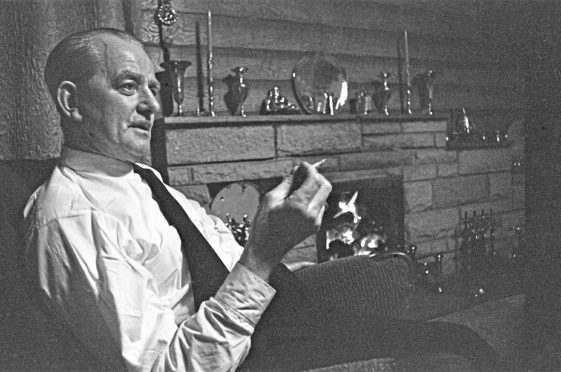
Fifty years ago today, MPs voted to abolish hanging.
A great cheer went up in the House of Commons when the result was announced shortly before midnight, revealing that a big majority had voted for the permanent abolition of the death penalty for murder.
The voting was 343 in favour and 185 against ending hanging in Britain.
The Commons vote came after a long seven-and-a-half-hour debate which ended with all three party leaders – Labour Prime Minister Harold Wilson, Conservative Edward Heath and Liberal leader Jeremy Thorpe going through the same lobby to vote against hanging.
Under the terms of the Murder (Abolition of Death Penalty) Act 1965, hanging had been suspended for five years and this result meant it would now not return.
Before the debate Duncan Sandys, Tory MP for Streatham, had presented Parliament with a petition calling for the return of hanging, claiming to have a million signatures.
He argued that public opinion backed the return of hanging as a better deterrent than prison.
Sandys said: “We have a duty to give the fullest consideration to the clearly-expressed wishes of those we represent. We have no right to assume that the firmly-held views of the overwhelming majority of the British people are unworthy and misguided.”
But Home Secretary James Callaghan opened proceedings by telling a packed House that the number of murders in Britain had varied between 114 and 154 between 1957 and 1968.
He concluded: “These figures show that the murder rate is not soaring as a result of the abolition of capital punishment but remains remarkably stable.”
However, there was some discontent among Tory backbenchers that the government had pressed ahead with the debate before the five-year suspension had expired.
The Opposition Spokesman on Home Affairs, Quintin Hogg, said that although he could not prove it statistically, “There are people dead today who might have been alive if the law had been different.
“There are also people alive today who would, if the law stayed the same, be dead within the next 10 years.”
Callaghan did admit that there had been a rise in violent crime but said he hoped to initiate research into its causes, believing that would offer a more long-term hope to society than a return to hanging as a method of deterring violence.
Two days after the debate, the House of Lords also voted in favour of abolition.
However, while the death penalty was indeed struck down for murder, it was retained for offences such as treason and piracy with violence until 1998.
As a result the gallows remained at Wandsworth Prison, though they were never used.

Enjoy the convenience of having The Sunday Post delivered as a digital ePaper straight to your smartphone, tablet or computer.
Subscribe for only £5.49 a month and enjoy all the benefits of the printed paper as a digital replica.
Subscribe